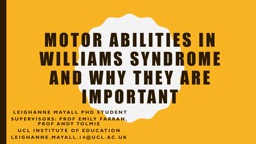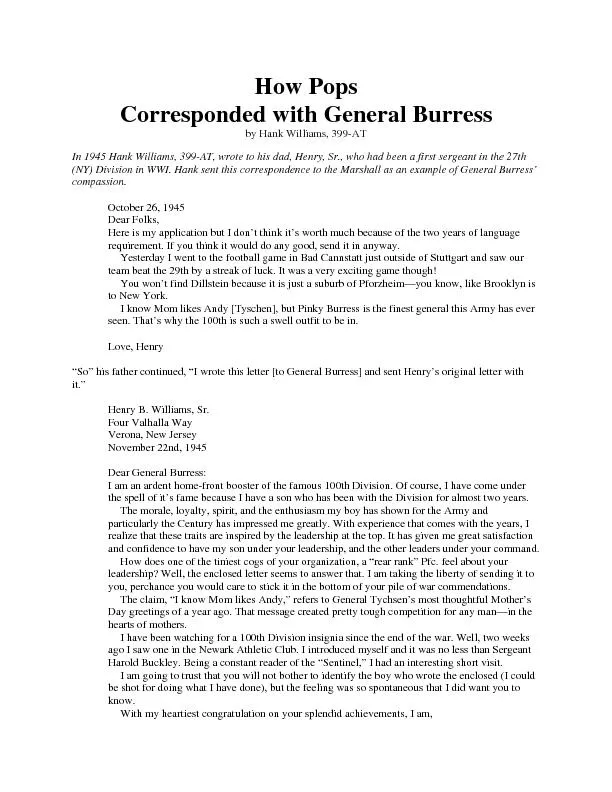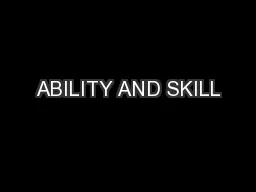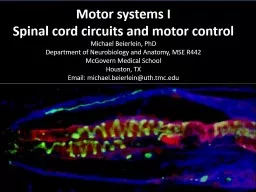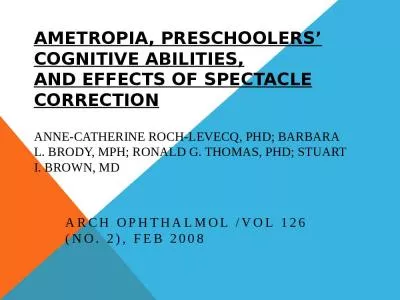PPT-Motor abilities in Williams syndrome and why they are important
Author : felicity | Published Date : 2023-08-31
Leighanne Mayall PhD Student Supervisors Prof Emily Farran Prof Andy Tolmie Ucl institute of education Leighannemayall14uclacuk overview Why are motor skills important
Presentation Embed Code
Download Presentation
Download Presentation The PPT/PDF document "Motor abilities in Williams syndrome and..." is the property of its rightful owner. Permission is granted to download and print the materials on this website for personal, non-commercial use only, and to display it on your personal computer provided you do not modify the materials and that you retain all copyright notices contained in the materials. By downloading content from our website, you accept the terms of this agreement.
Motor abilities in Williams syndrome and why they are important: Transcript
Download Rules Of Document
"Motor abilities in Williams syndrome and why they are important"The content belongs to its owner. You may download and print it for personal use, without modification, and keep all copyright notices. By downloading, you agree to these terms.
Related Documents

